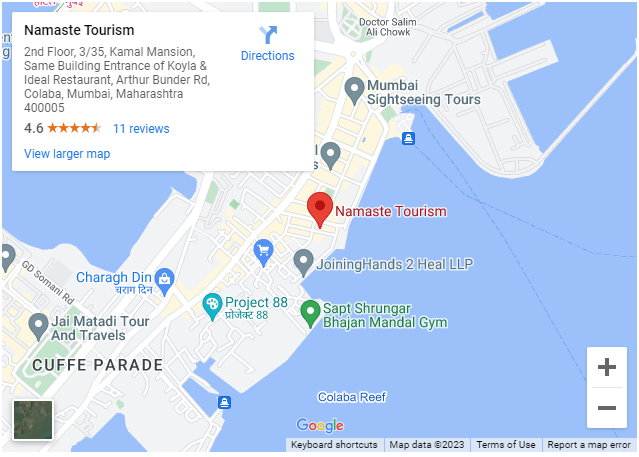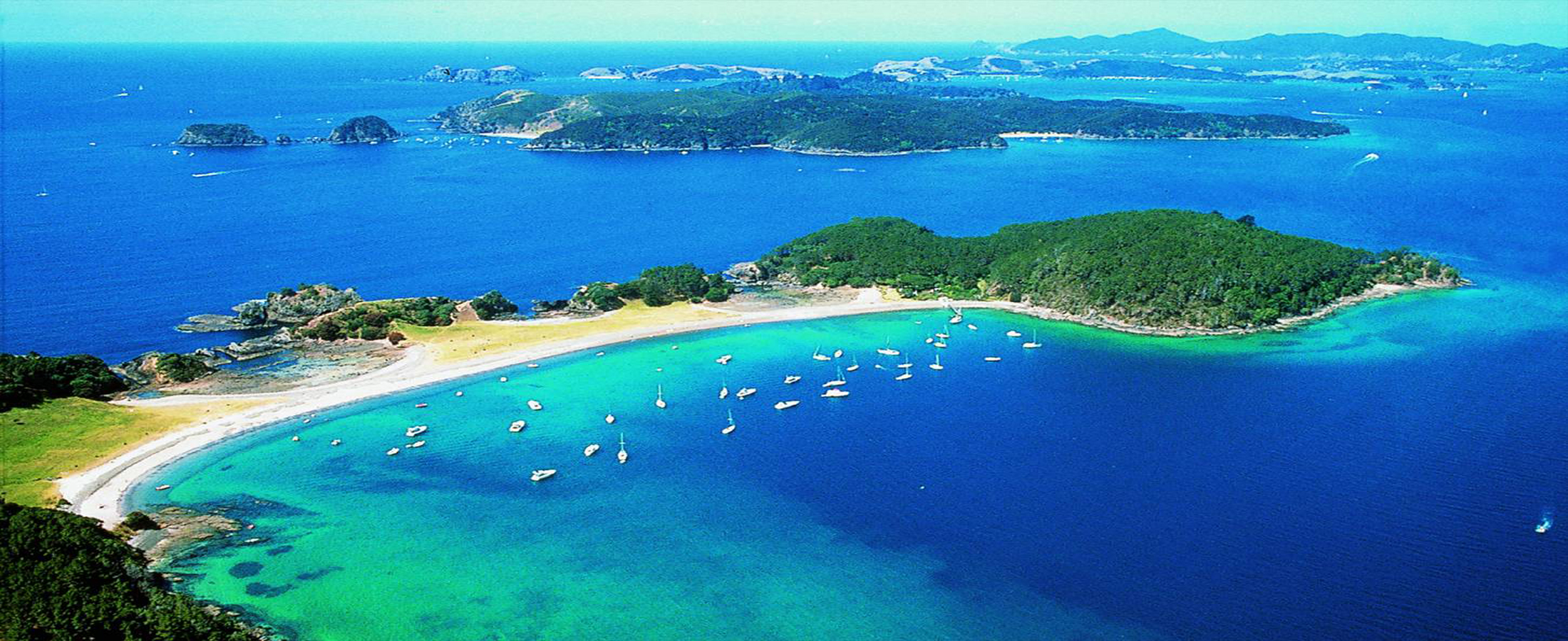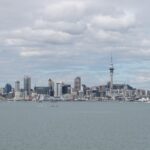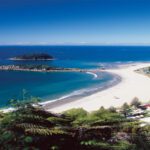Heading towards Bay of Islands
On day two in New Zealand, we headed to Paihia and we had a representative from Private Transfers and Tours to come and pick us up from the Sky City Hotel in Auckland to take us to the gateway to the beautiful Bay of Islands which is in Northland, also known as the First Region of New Zealand. Paihia is approximately 250 kilometres from Auckland and within 3 hours driving distance from the City of Sails.
En route we had the opportunity to take a short stop to see a Kauri tree. Northland is believed to be the region of Kauri Trees and when the westerners came they cut down most of these trees to make way for farmlands. However, there are more trees up in the north especially in Waipoua Forest where some of the trees date back to almost 2500 years or 500 B.C. One such tree is Tãne Mahuta or the Lord of the Forest as it is popularly known and is the largest living Kauri Tree in New Zealand. At Waipoua, you can take a 4 hour signature tour known as the “Twilight Encounter” which departs in the evening and is organized by Footprints Waipoua.
We also halted at Whangarei to see the Claphams Clocks Museum which has an amazing collection of clocks – the largest in the Southern Hemisphere. Established in 1940, the museum is a major attraction as you come face to face with amazing timepieces, hear the unique chimes and cuckoos whilst learning about the international history of clock making. This is indeed an educational and entertaining experience for people of all age groups. From a variety of cuckoo clocks to music boxes and even a version of the Big Ben, you find an entire range of clocks all under one roof.
We arrived at the Paihia Beach Resort and Spa which is one of the finest resorts of the region having won several awards for its property including the highly coveted World Travel Awards. The 5 star resort has 21 self contained and serviced units on 4 levels and is located on Ti Bay beach which overlooks the Bay of Islands. The resort offers stunning ocean views from each of its balconies and patios and is a couple of minutes drive from the shopping area of the region. The resort is 25 minutes from the Kerikeri Airport from where we were to take the Salt Air flight to Cape Reinga on the following day. The resort besides having one of the finest spas, was also voted by Condé Naste Traveller amongst the top ten spas in Australasia. It also boasts of an award winning sea view cum pool side restaurant called Pure Tastes which is headed by executive chef Paul Jobin and has won numerous culinary competitions and food awards.
The accommodation especially the deluxe rooms and superior suites are fully equipped comprising of private balconies or patios, kitchen facilities, DVD players, Hi-Fi Systems and all amenities that you would find in any high quality luxury resort to give you an ambience of a home away from home. An ideal place for honeymooners or family who wish to visit the Bay of Islands any time of the year as Bay of Islands is well known for its year round pleasant climate in the range of 20 to 25 degrees celcius. Paihia as a place is a town which is on the coast line and has several cafes, restaurants, arts and crafts as well as various accommodation options comprising of hotels, studios and apartments. It is the biggest city in Northland with a population of 1.2 million people. After checking in at the resort, we left our luggage and headed to the historic Waitangi Treaty Grounds – New Zealand’s most historic site where the Treaty between the Maori Chiefs and the British Crown was signed in 1840, the year when New Zealand became a nation. Some of the oldest traces of Maori settlement is found in Northland and today Northland is known for its spiritual peace as much as it is known for the various thrilling adventure activities which we were to experience during our stay in this region.
Before taking our guided tour of the Waitangi Treaty Grounds, we had a brief halt for lunch at the Waikokopu Café which is located in the beautiful setting of the Waitangi Treaty Grounds and is extremely popular not only with the tourists but the locals as well for its extensive range of edibles and coffee including a wide variety of vegetarian cuisine. It is a child friendly place as well and this was apparent from the fact that there were quite a few families present at the Café. Thereafter we started our tour of The Waitangi Treaty Grounds which comprised of visiting the major parts of the Waitangi National Trust estate comprising of 506 hectares. The Treaty of Waitangi was signed on 6 February 1840 at the Historic Treaty House. Entry to the Treaty Grounds is through the Visitor Centre which has an artifacts gallery and Treaty displays as well as an audio-visual theatre and souvenir gallery. The grounds besides the Treaty House also has a fully carved Maori Meeting House, a Maori war canoe and exhibitions as well as extensive park-like grounds with native bird life, heritage trees and offers great views of the Bay of Islands right across to Russell. Russell is a small town which during the 19th Century was branded as the “hell hole of the Pacific” due to the lawlessness prevalent during the 1830s.
It is then that the British Government appointed James Busby as the British Resident in New Zealand who arrived in Paihia in 1833 and settled in Waitangi and later played an active role as a mediator between the British and the Maori people. The main feature of the agreement was to ensure that the two people the Maori and the European settlers primarily from Britain would live and work together as one nation. Even today the agreement guarantees the rights of both the Maori and non-Maori citizens in New Zealand.
As part of our tour comprising of 90 odd minutes we visited the Treaty House, the Maori Waka or Canoe which is on display and is 35 metres long. Known as Ngatokimatawharorua, the canoe requires a minimum of 76 paddlers to handle it safely on water and is on display since 1940 as part of the Centenary Celebrations of the historic treaty. The canoe was made from three massive kauri trees felled in the Puketi Forest and is a larger version of the waka which was used to carry visiting and raiding parties on long coastal voyages before and after the first European settlers arrived in the region. We also visited the Te Whare Runanga or the Meeting House which was also opened for display during the Centenary Celebrations and stands alongside the Treaty House. Runanga which means “to discuss in assembly” is unique as it can be shared by all Maori Tribes. There are various carvings within the house which depict ancestors from several tribes.
Later in the evening, we headed back to our resort and we had the opportunity to experience the facilities at the resort or take a walk along the coast. We ended our day by enjoying some fine international cuisine at the award winning Pure Tastes restaurant at the resort in the pleasant company of Robyn Bolton, the General Manager of Destination Northland who played an active role in co-ordinating the itinerary for our visit to this wonderful region.
The next morning we were glad to experience some fine weather and we were well on track to take the 6 seater Cessna flight which would take us from the Kerikeri Airport flying over 90 mile beach and landing south of Cape Reinga – the northernmost tip of New Zealand and the meeting point of the Tasman Sea with the Pacific Ocean. The entire tour by flight takes around 5 hours and includes one hour flight and thereafter a 2 ½ hour experience on the Top of New Zealand which includes exploring Cape Reinga, and Te Paki quicksand stream where you can do sand tobogganing on the giant sand dunes. Thereafter we took the one hour flight back to Kerikeri Airport. The tour is operated by Salt Air Cape Reinga and you can return back to Paihia in time for lunch if you start at around 7.30 in the morning. However, for those who might experience air sickness it is strongly advisable to go on a light stomach on the Cessna and have a wholesome meal after returning back.
There are options of doing the Ninety Mile Beach and Cape Reinga by road as well. However, that would take the entire day and instead it would be recommended to do a Fly and Drive package which can be done in half a day and would cost 365 NZD (approx Rs 11000) and is well worth a trip. The flight over 90 mile beach including to and fro from Cape Reinga is spectacular and offers panoramic views of this beautiful region. One of the interesting facts to note is that the 90 mile beach is in fact only 55 miles or 88 kilometres long and in 1932 was used as a runway for flights from New Zealand to Australia for airmail. When the tide is low, you can drive along the 90 mile beach also known as the sandy highway on a luxury Waverider Coach and enjoy some scenic wonders of the North of New Zealand.
On our way back we had lunch at Nine which is one of Paihia’s newest restaurant and a wine bar and a popular meeting place for locals. Thereafter, we checked in with Fullers Bay of Islands at the Maritime Building to board the Excitor and take the high speed boat to take a cruise through the Hole in the Rock. The 90 minute cruise takes you zooming through the islands to Cape Brett passing by the Motukokako Island through the “Hole in the Rock” into the majestic Grand Cathedral Cave and back past Cape Brett Lighthouse. We were fortunate to get a glance of some dolphins swimming across although there are exclusive cruises not only for dolphin and whale watching but also you can swim with the dolphins as well as experience a 20 minute Nautilus Submarine Undersea Adventure on Urupukapuka Island on taking a full day cruise with Fullers Bay of Islands. The full day cruise costs NZD 105 ( approx Rs 3200) with a dophin sighting guarantee.
Later we alighted at Russell to do a mini-bus tour of this wonderful town which once was known as the Hell Hole of the Pacific. Around 1820 at the waterfront of Russell, there were several brothels and liquor shops. It was once quite a busy place with as many as 40 ships on shore at Russell at any given time. A lot of people who came here especially prisoners used to jump ships which were heading to penal colonies across in Australia. Today, this town has about a 1000 people living here and in January you find as many as 10000 people here as most of the houses out here are holiday houses and during the summer months you have people coming to stay in their holiday homes as well as there are tourists coming as well. There is Oyster Farming, commercial fishing and big game fishing which are the activities that are popular in Russell. There is also arts and crafts and tourism is a great employer of people of this town. A lot of retired people live here and the new millionaires such as the plumbers, carpenters and electricians have also brought property in Russell.
We boarded our bus and started the one hour tour and the driver cum guide gave us some interesting information about this town. It was Zane Grey, the American Novelist who came to Russell in 1930s and he put Russell on the international map as a place for big game fishing. The holiday homes in Russell are extremely popular and some of the better known properties are sold at a price between 1.5 and 2.5 Million NZD. We started our tour to get a closer insight into New Zealand’s earliest European history and the itinerary included short stops at the Cannon which was first sighted in 1917, the Maritime Visitors Centre, Pompallier, Clendon House, Anglican Church, Russell Primary School and the highlight being the spectacular views that you can get from Flag Staff Hill.
Russell in Maori is known as Kororareka and the legend goes that a Maori chief wounded in battle asked for some penguin broth to be brought to him and after drinking the broth he said “Ka reka te korora” which meant how sweet is the penguin. Eventually the town got its name of Kororareka from korora- the blue penguin and reka which means sweet. The unique feature of the town is that over the years it has continued to preserve its historic character and maintain its tranquility inspite of having a very turbulent past especially in the middle of the 19th Century. Later that evening we had some Indian cuisine at Paihia at The Indian Aroma restaurant which is on the waterfront at the Hansen Café within the Maritime Building itself.
The place that we missed out on was Kerikeri which is in the northern part of the Bay of Islands and is the largest citrus growing area in the country with oranges, mandarins, lemons, grapefruits, kiwifruits, avocados, olives and macadamia nuts also grown in the region. Kerikeri is historically important as it was the first Mission Station where the missionaries came and it also has some of the most historical buildings in the country. The Bay of Islands is a natural harbour and there are as many as 300 yachts a year which come across the Pacific and they come here to enjoy the summer before heading to Fiji, Tonga and other Pacific Islands. We bid adieu to the Bay of Islands and headed back to Auckland the following morning to pick up our 4 x 4 vehicles from Budget Rental Cars to explore the Bay of Plenty. After leaving Auckland airport around noon time we headed south from Auckland airport towards Hamilton in the direction of Tauranga which is a 3 hour drive from Auckland. I must admit that the best way to see New Zealand is by self drive.
Post a Comment
You must be logged in to post a comment.




